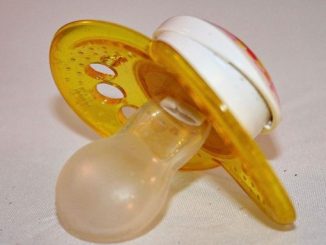
This year’s Olympics are now in full swing and it’s all eyes on the athletes.
From archery and shooting to athletics and gymnastics, there’s all kind of sports taking place across Paris, France, at the moment.
One fan-favorite sport to watch is the swimming, and this year there’s a whopping 854 athletes from 187 different countries competing.
But there’s a common theme you might have spotted with some of the swimmers and that’s the unusual dark red circles they have on their backs.

While it might look like they’ve had a fight with an octopus and lost, there’s a very different reason for the odd markings.
It turns out that the large spots are from cupping therapy – an ancient healing technique that involves placing cups on the skin to create suction and increase blood flow to the area.
The unconventional method is supposed to help with muscle recovery and is used as a type of deep tissue massage.
Some athletes were spotted with cupping therapy bruises back at the Rio Olympics in 2016, and it’s still seemingly popular now.

Gymnast Alexander Naddour told USA Today back in 2016 that cupping was supposedly the ‘secret’ to his health.
He added: “It’s been better than any money I’ve spent on anything else.”
Away from the Games, basketball player Kyle Singler has also praised cupping therapy.
“The bruises do look more intense than what they actually feel like, but the benefit from it is really great,” he previously insisted.
Singler continued to tell Sports Illustrated: “You’re not necessarily getting the immediate response that you might want but over time it does help with recovery and loosening tissue and stuff like that.”
But does cupping therapy actually work according to experts? It’s seems as if the jury’s still out.

According to Harvard Health, some studies have found that cupping might provide some relief for a number of musculoskeletal and sports-related conditions. The quality of this evidence was ‘limited’, however.
Elsewhere a 2022 review found that wet (as opposed to dry cupping) was effective for lower back pain.
While the bruises people get from cupping are pretty gnarly, the therapy is generally seen as safe to practice – even if people aren’t 100 percent on how affective it is.
“Most experts agree that cupping is safe. As long as those treated don’t mind the circular discolorations (which fade over a number of days or weeks), side effects tend to be limited to the pinch experienced during skin suction,” Harvard Health explains.
“It’s quite unusual that cupping causes any serious problems (though, rarely, skin infections have been reported).”
There you have it, folks.
An entitled couple claimed my premium airplane seat – I taught them a lesson and managed to profit from the situation

When I went out of my way to get one of the best seats on my flight, I didn’t expect to be swindled out of it by a manipulative couple. But what they didn’t know was that they messed with the wrong person, and in the end, I was the victor!
As soon as I settled into my aisle seat, feeling quite pleased with the extra legroom I had carefully selected for this long flight, I noticed a couple approaching. Little did I know that my interaction with them would lead to me teaching them an important lesson. Here’s my tale that can teach you how to stand up for yourself against bullies. Read on…
The woman who approached me was in her late thirties, dressed in a designer outfit that screamed wealth. But her expression was anything but pleasant. Her husband, tall and broad-shouldered, walked slightly behind her with an air of arrogance that matched her demeanor.
They stopped right next to me, and the woman’s eyes zeroed in on my seat. Without so much as a polite greeting and while exuding entitlement, she rudely demanded, “You need to switch seats with me. I accidentally booked the wrong seat, and I refuse to sit away from my husband.”
I blinked, taken aback by her tone. She spoke as if her mistake was somehow MY problem to fix! I glanced at her boarding pass, which confirmed my suspicion. It was a middle seat in row 12, not even close to the premium one I had chosen!
When I didn’t immediately comply, the woman rolled her eyes dramatically.
“Come on, it’s just a seat. YOU don’t need all that space,” she scoffed dismissively at my hesitation, her tone dripping with condescension.
Her husband, standing behind her with his arms crossed, smirked as he added, “Yeah, be reasonable. We need to sit together, and you don’t really need to be up here, do you?”
The audacity of their request left me momentarily speechless. They were clearly arrogant and hadn’t even bothered to ask nicely. They just assumed I would give in to their demands. I could feel the other passengers’ eyes on us, some curious, others sympathetic.
I took a deep breath, weighing my options. A confrontation wasn’t something I wanted to deal with, especially not at the start of a six-hour flight.
“Alright,” I said with as much calm as I could muster. Standing up, I handed over my boarding pass while trying hard to hide my irritation. “Enjoy the seat,” I told them without meaning it.
The woman snatched the ticket from my hand with a satisfied smirk. She muttered something under her breath about people in premium seats being “So selfish.” Her husband supported her by saying, “Someone like her doesn’t even need it.”
As I made my way toward the back of the plane, where her assigned seat was, I could feel my blood boiling. But I wasn’t one to make a scene. I had a better idea. Just as I approached row 12, a flight attendant, who had been watching the whole exchange, intercepted me.
She leaned in, her voice low as she whispered, “MA’AM, YOU DO REALIZE THIS WAS A SCAM, RIGHT? THEY TRICKED YOU OUT OF YOUR BETTER SEAT! THEY’RE BOTH MEANT TO BE IN ROW 12!”
I smiled at her, the anger simmering down to a cool resolve. “I know. But I’m about to turn the tables.”
“I actually have a little trick up MY sleeve. Don’t worry, I’ve got this,” I said as I winked.
The flight attendant raised an eyebrow, but she didn’t press further as she quickly put two and two together and tried stifling a laugh. She directed me to my new seat. So, as soon as I reached my middle seat and sat down, I started forming my plan.
The premium seat had been booked using my frequent flyer miles, and with that came certain privileges that most passengers wouldn’t be aware of. I knew exactly what to do to teach those two bullies a lesson they’d never forget…
My middle seat in row 12 wasn’t close to being as comfortable as the premium one I had given up, but I knew it would all be worth it. I allowed the mean couple to enjoy the seat and think they’d won.
About an hour into the flight, when the cabin had settled into a comfortable hum of quiet conversations and the occasional clink of glasses, I signaled for the flight attendant who had spoken to me earlier. She approached, and I asked to speak with the chief purser.
She nodded with a knowing smile and disappeared, returning moments later with a woman who exuded authority.
“Good afternoon, ma’am. I understand there was an issue with your seating,” the chief purser said, her voice professional but warm.
I explained my situation calmly, emphasizing how I had been moved from my premium seat due to the couple’s deception. The purser listened carefully, her expression serious.
When I finished, she nodded and said, “I appreciate you bringing this to my attention. Please give me a moment.”
I noticed a few passengers paying close attention to what was happening. They must have figured that I was retaliating in some way and didn’t want to miss anything. They hilariously kept throwing glances in my direction and at the departing purser.
When the head stewardess walked away, she left me wondering what my next move should be. A few minutes later, she returned, but instead of an apology, she offered me a choice.
“Ma’am, you have two options. You can either return to your original seat, or we can compensate you for the inconvenience with a significant amount of airline miles, equal to upgrades on your next three flights.”
I pretended to consider it, but I already knew what I wanted. “I’ll take the miles,” I said, smiling inwardly at the thought of the extra benefits this would bring. I knew fully well that the miles were worth far more than the price difference between premium and economy on this flight.
The purser smiled and made a note on her tablet. “It’s done. And as a token of goodwill, we’ve upgraded your next flight to first class.”
“Thank you,” I replied, genuinely pleased. As she walked away, I settled back into my seat, a sense of satisfaction washing over me. I knew the couple up front had no idea what was coming.
The flight continued without incident until we began our descent. That’s when I noticed a flurry of activity around row 3, where the couple sat. The chief purser, accompanied by another flight attendant had made their way to them, their expressions serious.
“Excuse me, Mr. Williams and MISS Broadbent,” the purser began, her tone no longer friendly. She pronounced the woman’s title with emphasis, making it clear to all aboard that the couple weren’t even married!
“We need to address an issue with your seats,” she continued looking quite stern.
Broadbent’s smile faltered, and Williams looked genuinely puzzled.
“What do you mean?” she asked, her voice tinged with irritation.
The purser glanced at her tablet before continuing. “We’ve been informed that you manipulated another passenger into switching seats with you, which is a violation of our airline’s policy. This is a serious offense.”
The color drained from the woman’s face, and she stammered, “But… but we didn’t do anything wrong! We just asked to switch seats!”
“Unfortunately,” the purser interrupted, “we have clear reports of your behavior. Upon landing, you’ll need to go with security for further questioning.”
All the passengers had wide eyes as they absorbed all the drama!
“Also, lying about being married when you are not to manipulate other passengers, is problematic in its own way. Additionally, due to this breach, you will be placed on our airline’s no-fly list pending an investigation,” the purser continued.
Williams opened his mouth to protest, but no words came out. The flight attendants, already poised to act, ushered them out of their seats and toward the back of the plane. As they were escorted, Broadbent felt the need to defend herself.
“I might not be his wife now, but I will be in a few months! He is going to divorce his wife to be with me!” she yelled frantically.
A collective shock settled among all of us as we realized the two were having an affair!
The crew took them where they would be the first to be escorted off by airport security.
As I gathered my belongings after landing, I couldn’t resist glancing at the couple one last time. Their smug expressions were gone, replaced by a mix of anger and humiliation.
They had lost more than just a seat as they were now facing consequences that would follow them long after this flight. Walking through the airport, I couldn’t help but smile to myself.
In my 33 years of life, I’ve realized that sometimes, getting even isn’t about making a big spectacle to get your way; it’s about patiently watching those who think they’ve won realize just how badly they’ve lost!
And that’s how it’s done, folks! If you enjoyed my story or even felt a little empowered by it, you’ll LOVE this next one! Julia thought she had a good friend in Janet until the latter showed her true colors after borrowing the former’s special item. Like me, Julia got revenge by teaching Janet a lesson she’ll never forget!



Leave a Reply